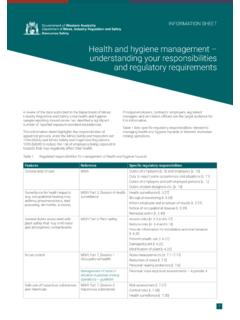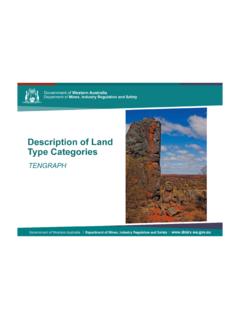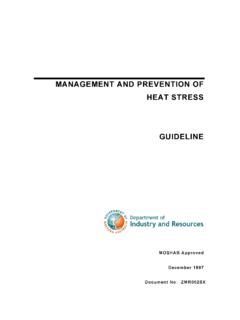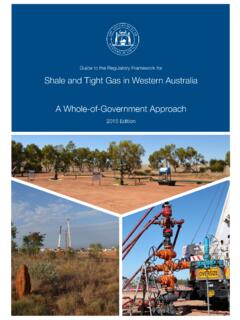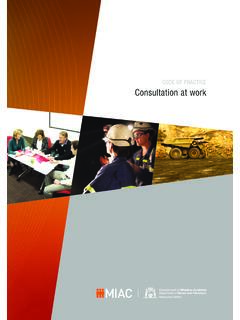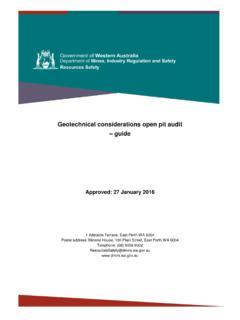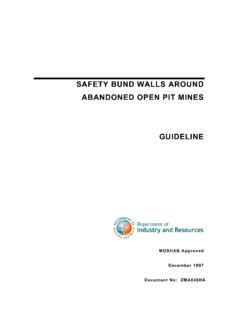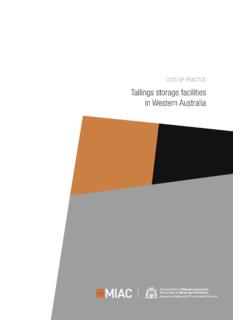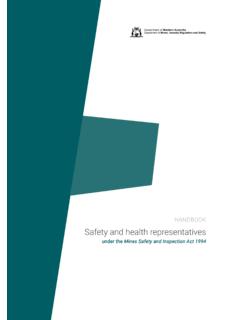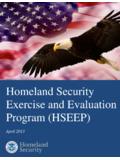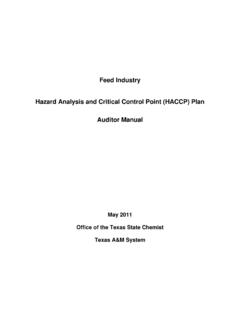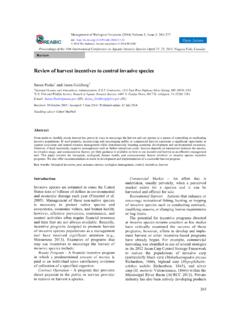Transcription of Risk-based health surveillance and biological monitoring
1 GuidelineRisk- based health surveillance andbiological monitoringGuidelineRisk- based health surveillance and biological monitoringii Risk-based health assessment and biological monitoring guideline ReferenceThe recommended reference for this publication is: Department of Consumer and Employment Protection, 2008, Risk-based health surveillance and biological monitoring guideline: Resources Safety, Department of Consumer and Employment Protection, Western Australia, 53 978 1 921163 45 6 Department of Consumer and Employment Protection 2008 Except where the Copyright Act otherwise allows, reproduction in whole or part of this publication will be permitted only with the prior written permission of the Department of Consumer and Employment Protection.
2 Applications for permission should be addressed to the Publications and Promotions Manager, Resources publication is available on request in other formats for people with special publication is also available in digital format (PDF) online at details of publications produced by Resources Safety can be obtained by contacting:Resources Safety Department of Consumer and Employment Protection Locked Bag 14 CLOISTERS SQUARE WA 6850 General queriesTelephone: +61 8 9358 8002 NRS: 13 36 77 Facsimile: +61 8 9358 8000 Email: publication ordersTelephone: +61 8 9358 8154 Email: information contained in this publication is provided in good faith and believed to be reliable and accurate at the time of publication.
3 However, the information is provided on the basis that the reader will be solely responsible for assessing the information and its veracity and State shall in no way be liable, in negligence or howsoever, for any loss sustained or incurred by anyone relying on the information, even if such information is or turns out to be wrong, incomplete, out-of-date or this disclaimer:State means the State of Western Australia and includes every Minister, agent, agency, department, statutory body corporate and instrumentality thereof and each employee or agent of any of includes information, data, representations, advice, statements and opinions, expressly or implied set out in this includes loss, damage, liability, cost, expense, illness and injury (including death).
4 Resources Safety, Department of Consumer and Employment Protection iiiContentsForeword .. exposure risk .. basis for health surveillance .. health surveillance .. is biological monitoring .. monitoring methodology ..87 Action levels .. measures and safe work practices .. monitoring for specific chemicals .. Continual improvement of Risk-based .. health surveillance Further information .. 1. Legislative provisions .. 2. Glossary .. 3. biological monitoring result form .. 4. Notification of outcome of health 5. Notification of occupational disease form .. 6. Exposure standards for personal exposure and biological monitoring .
5 7 Controlling exposure to toxic metals in the workplace .. Risk-based health assessment and biological monitoring guideline ForewordThis guideline is issued by Resources Safety under the Mines Safety and Inspection Act 1994, and has been endorsed by the Mining Industry Advisory ActThe Mines Safety and Inspection Act 1994 (the Act) sets objectives to promote and improve occupational safety and health standards within the minerals industry. The Act sets out broad duties, and is supported by regulations, together with codes of practice and Mines Safety and Inspection Regulations 1995 (the regulations) provide more specific requirements for a range of activities.
6 Like the Act. The regulations are enforceable and breaches may result in prosecution, fines, or directions to cease operations and undertake remedial provisions of this guideline apply to all mines as defined in section 4(1) of the guideline is an explanatory document that provides more information on the requirements of legislation, details good practice, and may explain means of compliance with standards prescribed in the legislation. The government, unions or employer groups may issue guidance with guidelines is not mandatory but they could have legal standing if it were demonstrated that the guideline is the industry norm. Who shoulD use this GuiDeline?
7 Everyone who has a duty to prevent, as far as practicable, hazards on mines should use this code. This includes employers, employees, self-employed people, safety and health representatives and safety and health Safety, Department of Consumer and Employment Protection 11 introduction Epidemiological and toxicological studies indicate that exposure to some minerals currently being mined in Western Australia, or present as significant contaminants in mined ores, can cause serious health effects such as cancer, reproductive effects, kidney or liver damage, and neurological disturbances. These health effects are in addition to the well-known effects of particulates and fibres on the respiratory system, like asbestosis, pneumoconiosis and guideline will assist in meeting the requirements in the Mines Safety and Inspection Act 1994 (the Act) and the Mines Safety and Inspection Regulations 1995 (the regulations)
8 Relating to biological monitoring and the additional health surveillance required when employees are exposed to hazardous substances other than silica and focuses on how to measure employees real exposures to chemicals using biological monitoring to assess whether the exposures have negatively impacted their health , and the implementation of Risk-based health surveillance to address any issues that may arise following exposure to a specific chemical. Particular attention is paid to toxic metals being mined or present as significant ore contaminants in Western Australia, or used at mining guideline differentiates Risk-based health surveillance from the MineHealth health surveillance system prescribed in the legislative provisions that apply are listed in Appendix 2 provides a glossary of terms and abbreviations used in this guideline and applicable forms, available from the Resources Safety website.
9 2 Assessing exposure risk Any mining or exploration company whose operations have the potential to disturb, mine, concentrate, process or handle toxic materials or use hazardous chemicals must identify, assess and monitor employees exposures and the effects of these hazards. 2 Risk-based health assessment and biological monitoring guideline The first step is to identify all hazardous chemicals in the workplace, including toxic metals already present in the ore. The next is to determine the potential and actual exposure levels for all employees who may come in contact with the hazardous chemicals. Some selective leaching and mineral concentration processes may also concentrate undesired contaminants.
10 Hazardous contaminants should be tested for throughout the process to identify whether employees could be exposed to elevated concentrations. Exposure may occur through inhalation, ingestion (from contaminating food or drink) or absorption through the skin. As the most common route of occupational exposure occurs via the respiratory system, assessing the exposure risk is usually done by sampling the air within the breathing zone of the worker. Also known as personal exposure monitoring , this technique indicates how much of the chemical or contaminant is present in the air (airborne concentration) that could be inhaled. The rate and amount of contaminant taken up by the body depends on factors such as: size and nature of the contaminant; atmospheric conditions; breathing rate of the worker; whether a respirator is worn; whether the chemical can enter the body via routes other than breathing, such as through skin or ingestion; and individual differences such as personal hygiene habits, age, gender and fitness level.
